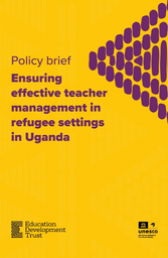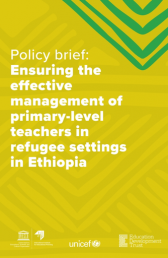
Online version
About the publication
Concentrating on a sample of 30 secondary schools in the Oyo state of Western Nigeria, this study diagnoses the disparities in secondary education development there and seeks those factors that determine the unit cost of education. The status of secondary educational development in Oyo state is shown by examining those indicators showing such variables as access to secondary education, the quality of education (through student-teacher ratios), the efficiency of schools (through their average size), and the unit cost per student year. Critical areas requiring immediate improvement are highlighted. An analysis of enrolments and teaching manpower in 30 secondary schools, both rural and urban, provides data that are used to discover cost norms, such as unit cost, cost-size relationship, and rural-urban comparison of recurrent expenditures. In finding factors that are most important in determining unit costs of secondary education, the author identifies significant variables in the expenses of the 30 schools and then finds statistically the relative contributions of cost factors. He discovers that the factors crucial to cost are student-teacher ratio, average teacher salary, and enrolment. It is finally recommended that similar microlevel cost analyses be included in future educational planning (from ERIC database)









